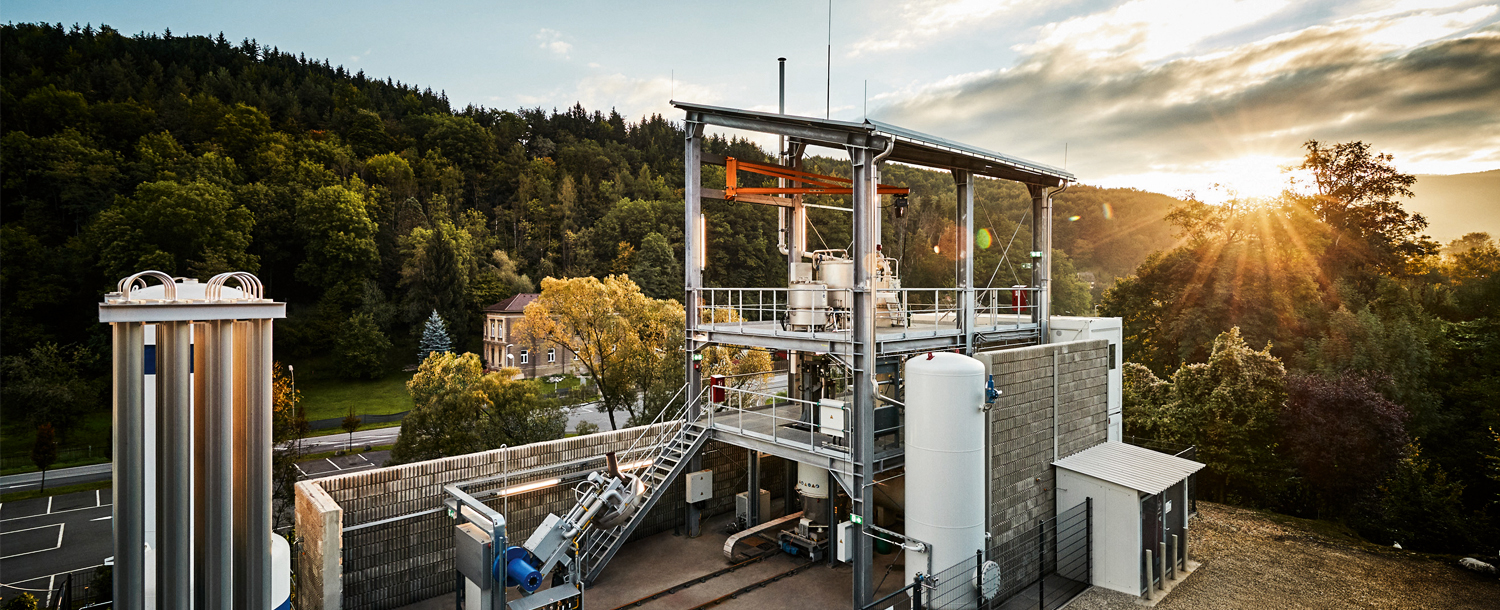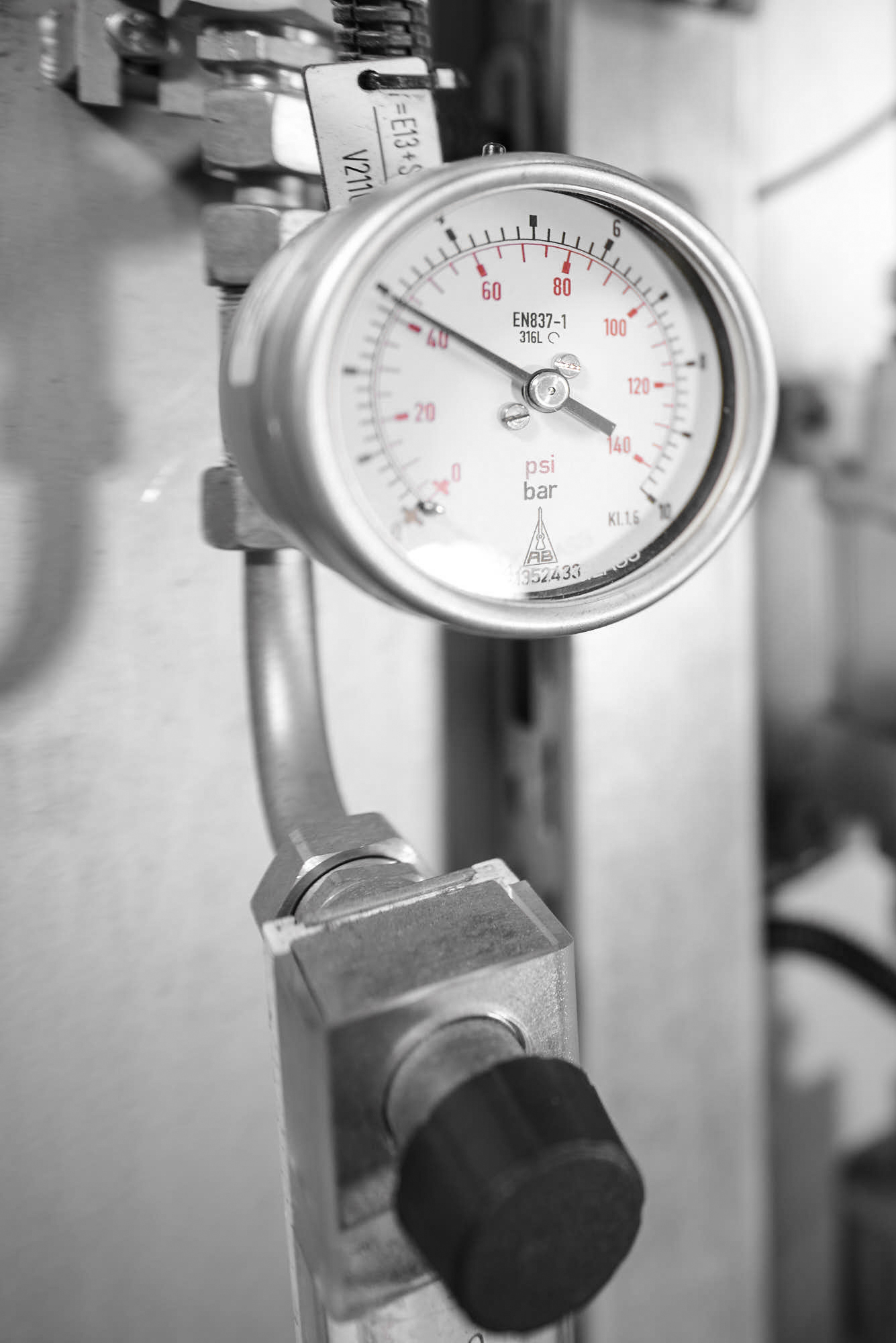Overview
The use of fossil fuels leads to CO2 emissions in the atmosphere. This promotes global warming due to the artificial greenhouse effect caused by humans. In Area 2, solutions for climate-neutral steelmaking and the development of carbon dioxide (CO2) as a resource for a carbon cycle are investigated. By using CO2 as a resource in the carbon cycle, K1-MET can reduce greenhouse gas emissions and contribute to a more balanced and sustainable planet.
Several strategies are developed to reduce CO2 emissions in industries that need a lot of energy. K1-MET is focused on the steel, refractory, cement and chemical industry.
One approach is carbon direct avoidance like the hydrogen plasma smelting reduction (HPSR) and hydrogen-based fine-ore reduction (HYFOR). Carbon Direct Avoidance (CDA) is the European steel industries’ most efficient low carbon strategy. This concept includes steelmaking processes with almost zero CO2 emissions.
Hydrogen plasma smelting reduction (HPSR) is a process with electricity in combination with hydrogen plasma as energy carrier and reducing agent. Currently, reducing agents are used in the blast furnace to remove the oxygen from the iron oxides. The main state-of-the-art reducing agent in the blast furnace (BF) is carbon (in the form of coke). K1-MET is looking for more sustainable alternatives such as hydrogen. HPSR produces liquid steel from fine ores in a single step using hydrogen plasma as reducing agent and primary energy source. This is an efficient technology for a sustainable steel industry with low CO2 emissions.
Hydrogen-based fine-ore reduction (HYFOR) is the direct reduction of iron ores with hydrogen and zero CO2. Since the process takes place at lower temperatures and the fine ores do not have to be agglomerated, this type of direct reduction requires less energy. Agglomeration of fine ores refers to the process of combining small particles of ore into larger, more manageable pieces.
Another strategy to achieve this target is sector coupling. This means that different industries and sectors are working together to jointly use energy and resources. The aim is to balance surpluses and shortages and increase overall efficiency. The goal is to save resources and reduce greenhouse gases. Sector coupling is a key factor to stabilize the renewable energy system and to offer chemical storage for winter needs.
Further innovative technologies for short-term carbon reduction include smelting processes, green and smart furnaces. As direct reduction works without any liquid phase, a pre-smelter is demanded as a link between the direct reduction plant and the basic oxygen furnace to convert low-quality Direct Reduced Iron (DRI) into hot metal before being refined. The development of such a smelter is the focus of a project.
Heating furnaces powered by renewable energy or alternative fuels are researched to reduce the carbon footprint. Alternative energy sources include hydrogen, electric energy and biological or renewed gases such as methane.
Smart furnaces are equipped with advanced technology to improve operation and minimize energy consumption. Data analytics and artificial intelligence help to monitor and control furnace operation. Several methods to adapt existing furnaces with electric heating will be investigated. Mathematical methods, e. g., Computational Fluid Dynamics (CFD) and “FastCalc” methods are used for this. Please refer to Area 3 for more information.
Moreover, hydrogen-based burners concepts are being developed. These technologies use hydrogen as a fuel in steel production.
Additional methods for Carbon Direct Avoidance can support sustainable steel production. Carbon Capture and Utilization (CCU) enables to capture CO2 and use its pure form for further processes. One example is methanation, where methane is produced synthetically from hydrogen and CO2. This gas can be further used in the steelworks to close the carbon cycle, thus avoiding new fossil fuels and reducing CO2 emissions overall.
Another approach to meet the climate agreement is the carbonisation, where by-products from steelmaking such as ashes or slags are used to bound CO2 in a solid form. The produced so-called carbonates are deposited. Since these side products have to be deposited anyway, this method acts as an alternative to common Carbon Capture and Storage (CCS) methods.
Objectives and Motivation
- Increasing decarbonization processes of the metallurgical sector
- Developing hydrogen-based plasma smelting, direct reduction and burner concepts
- Carbon capture and utilization in the energy intensive industry to transform CO2 into valuable products
- Promoting sector coupling for creating stable renewable energy systems and chemical storage for the demand in winter
Planned measures
Area 2 is fully committed to the goals of the European Union Green Deal in climate-neutral metallurgical technologies. Processes for reducing CO2in energy-intensive industries (hydrogen plasma smelting reduction, hydrogen-based burner developments and direct reduction, Carbon Capture and Utilization as well as Carbon Capture and Storage technologies) will be developed to pilot plant scale.
The focus is on the use of renewable energy, which allows a 100 % CO2 reduction in the long-term perspective. The goal is to achieve climate neutrality for the metallurgical and energy intensive industry in 2050.
The processes to be developed aim to decrease the total energy demand to achieve economically and ecologically sound decarbonised processes.In this way, K1-MET improves the innovative capacity of their company partners. Area 2 also helps to develop solutions for the key issue of climate protection while remaining competitive. This contributes to a long-term oriented research cooperation between science and industry.

 DE
DE EN
EN
![[Translate to English:]](/fileadmin/_processed_/6/4/csm_liquid14_weiss_e50833489d.png)

